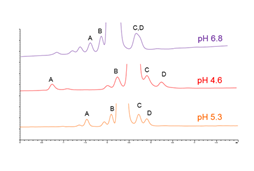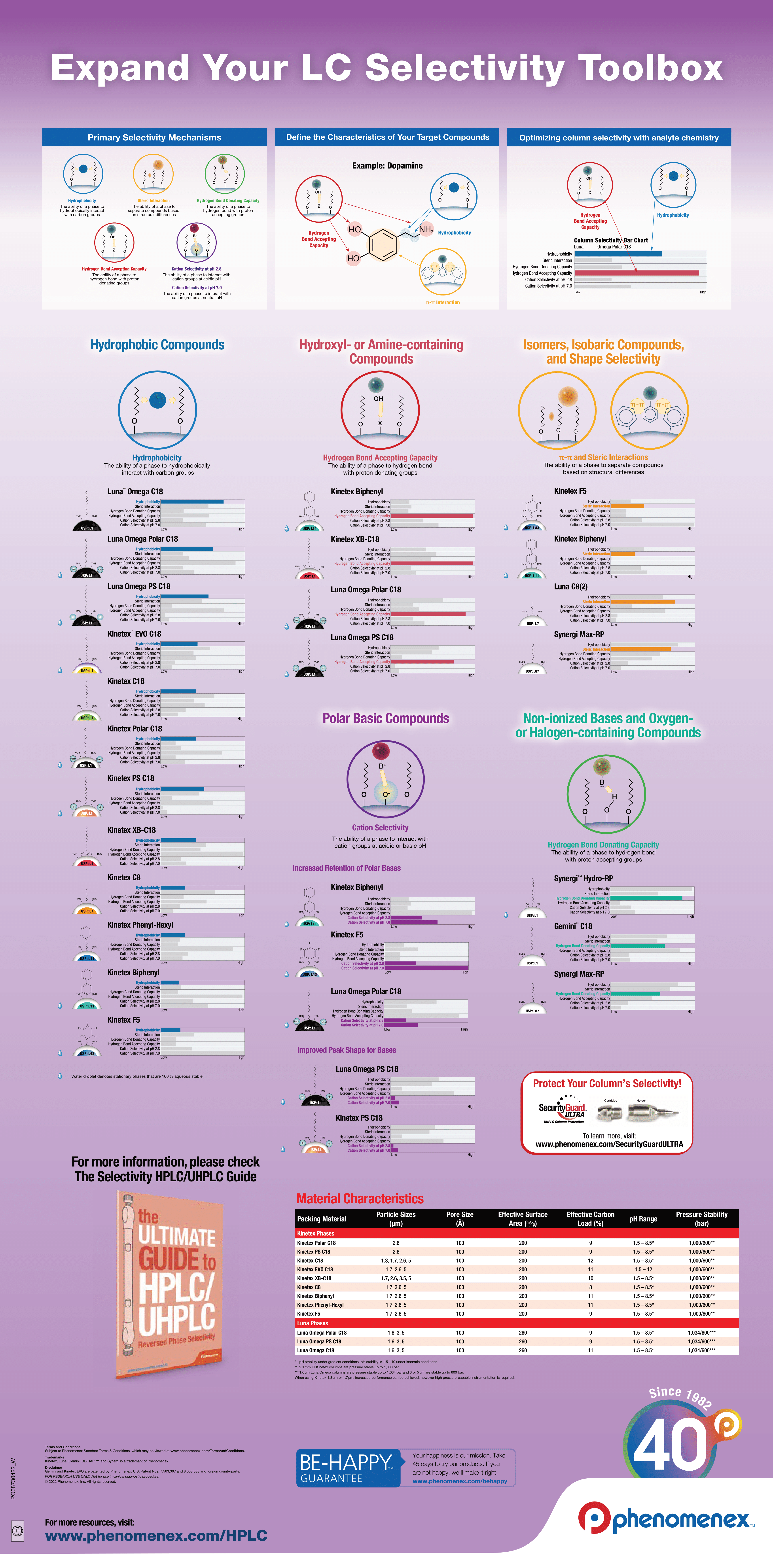LC Technical Tip
Level: Basic
A Systematic Approach to Peptide Analysis
Overview
Peptides are often considered closer to small molecules when it comes to the development of chromatographic methods for their analysis. However, they bridge the gap between small molecules, (traditional pharmaceuticals) and larger biomolecules (proteins, AAVs, Oligos). When analyzing peptides, we cannot simply consider the properties of their comprising amino acids, as their characteristics depend not only on these building blocks but also the bonding sequence into a peptide chain and also the way in which the peptide chains are coiled or folded in space. For this reason, peptides can behave differently than small molecules when you analyze them through HPLC.
Tip
Initial method development for peptides should begin with a chemical screening process, and during this, a variety of stationary phases are screened, beginning with a typical alkyl phase. If the profile you achieve does not give the desired selectivity you should move to an alternative phase, ideally with very different properties.
The mobile phase gradient is also an important variable that should be considered for peptide analysis. Typically you see much shallower gradients than you would with small molecule work. For gradient optimization in peptide analysis, we would advise starting with a low % B (organic) to focus the peptides onto the front of the column and run a shallow slope up to 50-60% organic in which all peptides should elute (increase of 1% B per minute is typical). ThepH of the sample diluent and mobile phase should also be considered as it affects the physiochemical properties of the peptide, and as a result, their retention time. Finally, the nature of your eluting solvent should be considered, which typically for peptides is acetonitrile.
Once you have conducted your initial screen, method optimization can be done by changing other method parameters (Fig. 1). The most dramatic of these in terms of the impact on selectivity is pH (Fig. 2).
Fig. 1
| Variable | Solution |
|---|---|
| Flow-rate | Less impactful for peptides than small molecules |
| pH | Small change can have large impact |
| Gradient Slope | Gradient changes affect selectivity considerably |
| Temperature | 40-90⁰C |
| Buffer Type | Many solutions including TFA, formic acid, HFBA, phosphate buffers |
Fig. 2

Column: Kinetex EVO C18 5µm
Dimensions: 250 x 4.6mm
MP A: 50mM Ammonium acetate in Water; Acetonitrile (v/v 97:3), pH as indicated
MP B: 50mM Ammonium acetate in Water: Acetonitrile (v/v 60:40), pH as indicated
Flow Rate: 1.5 mL/min
Gradient Program: 14-34% B, 40 minutes, ramp to 80%
Detection: UV-Vis @ 220nm
Temperature: 65oC
Sample: 12 AA synthetic peptide with synthetic related impurities
Stationary phases play an important part in the development process and it is recommended you explore different column chemistries (Fig. 3).
| Column | Example | Properties | Peptide Groups |
|---|---|---|---|
| Primary C18 | KinetexTM EVO C18 | High-pH stability | Impurity profiling, including stereoisomeric peptide impurities |
| Alternative C18 | BioZenTM Peptide PS-C18 | Mixed mode C18 | Basic peptides Polar peptides |
| C8 | Kinetex C8 | Different bonding density | Very hydrophobic peptides. Alternative selectivity to C18 |
| Aromatic / Phenyl | Kinetex Biphenyl | Unique hydrophobic arylene and polar selectivity | Very hydrophobic peptides Cyclic peptides Peptides with aromatic side chains |
Conclusion
Developing a systematic approach to method development for the analysis of synthetic peptides will allow you to accurately quantify and purify peptides in a robust and reliable process. Screening column chemistries and pH is of paramount importance and well-buffered and controlled systems are a must. Following a Quality by Design (QbD) process simplifies this strategy and brings together all the important elements during your method development.

FREE HPLC Selectivity Poster
Let the HPLC Selectivity Poster Show You How to Separate:
• Hydrocarbon Compounds
• Hydroxyl- or Amine- containing Functionalities
• Isomers, Isobaric Compounds and Shape Selectivity
Trademarks
Biozen, Kinetex, and Luna are trademarks of Phenomenex.


